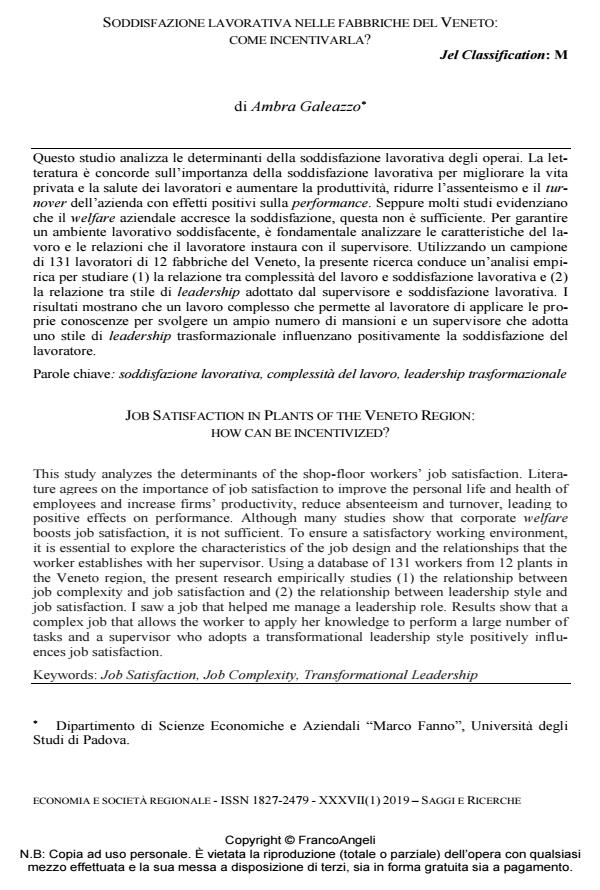Soddisfazione lavorativa nelle fabbriche del Veneto: come incentivarla?
Titolo Rivista ECONOMIA E SOCIETÀ REGIONALE
Autori/Curatori Ambra Galeazzo
Anno di pubblicazione 2019 Fascicolo 2019/1
Lingua Italiano Numero pagine 24 P. 141-164 Dimensione file 371 KB
DOI 10.3280/ES2019-001010
Il DOI è il codice a barre della proprietà intellettuale: per saperne di più
clicca qui
Qui sotto puoi vedere in anteprima la prima pagina di questo articolo.
Se questo articolo ti interessa, lo puoi acquistare (e scaricare in formato pdf) seguendo le facili indicazioni per acquistare il download credit. Acquista Download Credits per scaricare questo Articolo in formato PDF

FrancoAngeli è membro della Publishers International Linking Association, Inc (PILA)associazione indipendente e non profit per facilitare (attraverso i servizi tecnologici implementati da CrossRef.org) l’accesso degli studiosi ai contenuti digitali nelle pubblicazioni professionali e scientifiche
Questo studio analizza le determinanti della soddisfazione lavorativa degli operai. La letteratura è concorde sull’importanza della soddisfazione lavorativa per migliorare la vita privata e la salute dei lavoratori e aumentare la produttività, ridurre l’assenteismo e il turnover dell’azienda con effetti positivi sulla performance. Seppure molti studi evidenziano che il welfare aziendale accresce la soddisfazione, questa non è sufficiente. Per garantire un ambiente lavorativo soddisfacente, è fondamentale analizzare le caratteristiche del lavoro e le relazioni che il lavoratore instaura con il supervisore. Utilizzando un campione di 131 lavoratori di 12 fabbriche del Veneto, la presente ricerca conduce un’analisi empirica per studiare (1) la relazione tra complessità del lavoro e soddisfazione lavorativa e (2) la relazione tra stile di leadership adottato dal supervisore e soddisfazione lavorativa. I risultati mostrano che un lavoro complesso che permette al lavoratore di applicare le proprie conoscenze per svolgere un ampio numero di mansioni e un supervisore che adotta uno stile di leadership trasformazionale influenzano positivamente la soddisfazione del lavoratore.
Parole chiave:Soddisfazione lavorativa, complessità del lavoro, leadership trasformazionale
Jel codes:M
Ambra Galeazzo, Soddisfazione lavorativa nelle fabbriche del Veneto: come incentivarla? in "ECONOMIA E SOCIETÀ REGIONALE " 1/2019, pp 141-164, DOI: 10.3280/ES2019-001010